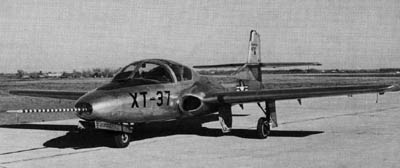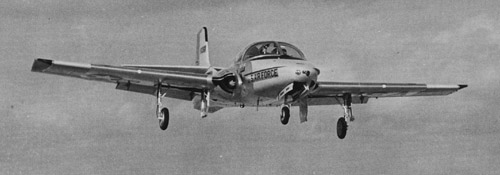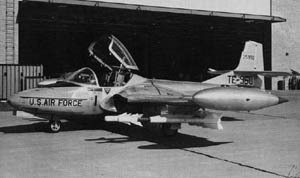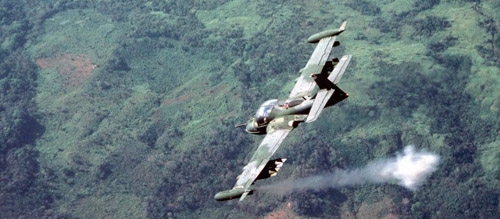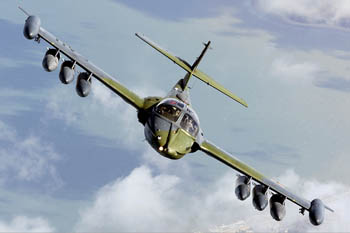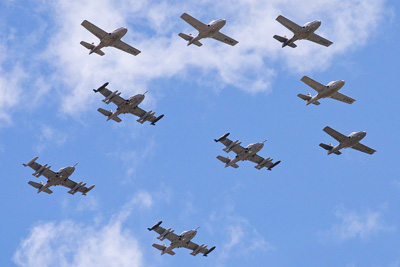 |
||||||
|
||||||
|
|||||||
| back to Cessna A/T-37 main | |||||||
| Cessna A/T-37 |
|||||||
While not as well-known as some of the more glamorous Aircraft, like fighters, the Cessna Tweet is a legend in its own right: For more than 52 years it has served as the U.S. Air Force’s primary trainer, not to mention going to war and serving with many air forces of smaller countries. |
|||||||
|
|||||||
A typical feature of the T-37 became its ultra-wide track landing gear, that gives great stability on landing and takeoff, while the relatively short landing gear and in consequence the close proximity of air intakes to the ground increased the risk of FOD (Foreign object damage). |
|||||||
|
|||||||
| The T-37A entered production in 1955. Soon, it was updated to the T-37B, which featured a stronger, improved engine and better avionics. The next version of the Tweet became the T-37C, which received modifications to be used as a weapons trainer that could be used for light attack missions, aiming also at the export market. The T-37 was used by 20 air forces in all kinds of training roles. It was a plane that was pleasant to fly, agile and responsive. Its capability to perform all kinds of acrobatic maneuvers also made it a natural choice for various acrobatic teams, it was even once considered as the plane for the USAF Thunderbirds. |
|||||||
|
|||||||
With the growing involvement of the United States in Vietnam, a counter-insurgency version of the T-37 was projected and two prototype YAT-37D were built. It took a while though until the project got picked up to become the A-37 which replaced A-1 Skyraiders, which had a high rate of losses in Vietnam. |
|||||||
|
|||||||
| The A-37’s changes from the T-37 included once again stronger wings, four hardpoints for ordnance, larger wingtip tanks (95 gal), an internal 7.62mm minigun, better avionics and a tougher landing gear suitable for rough fields. It also had the option to install an aerial refueling probe. A pre-production of 39 A-37A’s was ordered for battle evaluation. They did so well in close air support, that a slightly improved version, the A-37B was ordered in larger numbers. In total 577 were built, 254 of which were flown in the markings of the South Vietnamese Air Force. 95 captured A-37’s were later used by Communist Vietnam until spare parts ran out in the early 1980s. The A-37 was operated by a number of smaller countries, especially in South America, where it was also used in combat, particularly by Honduras, El Salvador and Guatemala. Some of the USAF’s A-37’s were converted to OA-37s for the Forward Air Controller role. |
|||||||
|
|||||||
| wingspan: 10.26m length: 8.92m height: 2.8m empty weight: 1755kg max loaded weight: 3630 kg maximum speed: 4647km/h range: 1065km |
|||||||
| return to top | |||||||
